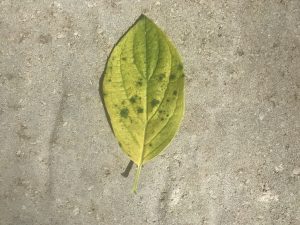A Biased View of Hydrangea Leaves Turning Yellow
Not known Incorrect Statements About Hydrangea Leaves Turning Yellow
Table of ContentsThe Only Guide for Hydrangea Leaves Turning YellowSome Known Factual Statements About Hydrangea Leaves Turning Yellow All About Hydrangea Leaves Turning YellowTop Guidelines Of Hydrangea Leaves Turning YellowThe Only Guide to Hydrangea Leaves Turning YellowLittle Known Questions About Hydrangea Leaves Turning Yellow.
One opportunity is that the plant is not getting sufficient sunlight. During the winter season, the days are much shorter, and the sunlight is not as extreme, so ensure to put your Hydrangea in a place where it will certainly get at the very least six hours of sunlight every day. An additional factor for Hydrangea yellow leaves in wintertime could be way too much water.The leaves could be transforming yellow due to temperature anxiety. Hydrangeas like cooler temperature levels, so if the plant remains in a spot that gets too hot or as well chilly, the fallen leaves will transform yellow. If you assume temperature level tension might be the concern, attempt moving your Hydrangea to a various place or securing it from the elements with a burlap wrap.
:max_bytes(150000):strip_icc()/GettyImages-1286441508-16633f72dd07438ba515bfb08157b9da.jpg)
See This Report on Hydrangea Leaves Turning Yellow
In the springtime when the mercury stays fairly low, they'll do great. When points warm up over the summer nevertheless, time invested in the very early mid-day rays can trigger untold damage.: Expand your hydrangeas in a spot where they'll obtain sunlight in the early mornings or nights, however not throughout the peak hours.
Wilting is triggered by absence of dampness, implying there are a couple of good techniques to make use of to avoid this from taking place - Hydrangea Leaves Turning Yellow. Provide your hydrangeas a healthy glug of water every couple of days when the temperatures are climbing high, and treat the dirt to better retain moisture. After watering, a dab of mulch around the base of each plant must assist with this by keeping moisture in the dirt

What Does Hydrangea Leaves Turning Yellow Do?
As a basic guideline, we suggest removing leaves when they are 50% brownish or greater. While browning triggered by any reason can not be reversed, taking the rehabilitative activity explained above will encourage the plant to grow new fallen leaves so the damaged fallen leaves either diminish naturally or can be removed by the gardener.
Hydrangeas need to be watered Website only when the leading couple of inches of soil are dry, and ought to be given an extensive soaking each time. Underwatered hydrangeas are likely to have yellow, wilting, and drooping fallen leaves. Increase the frequency and quantity of sprinkling for your shrub to aid address this problem. Hydrangeas like relatively wet (yet not soaked) soil, so provide the origins an excellent soaking and allow water to be soaked up right into the dirt look at here now before applying more.
The means you take care of hydrangea leaves turning yellow depends on the vital problem triggering the yellow leaves. This can be difficult to establish, however as soon as you do you will certainly have the ability to adjust your plant care appropriately to take treatment of the issue. Hydrangea Leaves Turning Yellow. As discussed in the past, a common concern with hydrangeas is nutrition shortages
Some Ideas on Hydrangea Leaves Turning Yellow You Need To Know
During the top growing period, you need to sprinkle at a price of about 1 inch weekly. If you are stressed over not effectively sprinkling your hydrangeas, there are a pair of things you can do. Adding mulch to the base of the plants over the origin area assistance to manage the temperature around the bush and keep water in the dirt.
Alternatively, you can buy and set up easy watering globes. Sprinkling worlds hold water in them and gradually launch this water right into the soil as the ground comes to be dry. Simply load the globe with water, stick the spout into the soil within the root zone near the base of the plant, and leave it in position up until all the water is gone.
If it is as well serious, some plants will never ever recover that site from transplant shock and will certainly remain to decline until they pass away. Minimize transplant shock by including as many origins as possible when digging up your plant to relocate. Make sure to supply even more water than usual in the weeks following planting to assist your plant recoup and expand new roots.
Hydrangea Leaves Turning Yellow for Beginners

To prevent spreading out fungal diseases, be certain to thouroughly clean and decontaminate any trimming tools prior to and after use. You can attempt to flush the roots with water to remove excess fertlizer.
Your hydrangea plant chooses well-drained, wet soil. If the pot has bad drainage, or your dirt is flooded, the fallen leaves will certainly begin to transform yellow.
If you don't sprinkle your hydrangea plant for more than a week, the fallen leaves will begin transforming yellow. Fungal conditions that attack the plants often tend to reveal signs on the roots and the leaves of the plant.
The Best Guide To Hydrangea Leaves Turning Yellow
Fallen leave spot is another fungal condition that can target hydrangea. It results in the leaves transforming yellow and the look of brown and purple areas on the fallen leaves.